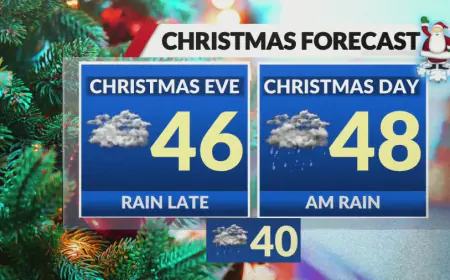Coach houses, other accessory dwelling units would boost housing equity in Black neighborhoods
For nearly a century, Chicago’s housing policies have systematically disadvantaged minorities, particularly Black residents, for whom housing costs have become more unaffordable. Eight out of nine Chicago community areas experiencing the highest housing cost burden are predominantly Black.To create a more equitable housing market, city leaders must undo restrictive policies that favor the privileged. They can start by passing an amendatory ordinance that would expand access to accessory dwelling units in lower-income communities.Accessory dwelling units, known as ADUs, are one of the best and most seamless avenues for creating more affordable housing options such as coach houses behind a primary residence; granny flats, which are small, self-contained living spaces with separate entrances; and English basements, which are separate lower-level apartments, usually in a townhouse and also with a separate entrance.Their small size makes them significantly more cost-effective to build than single-family homes, and they provide families with an additional income stream.ADUs are wildly popular: 71% of Chicago residents favor allowing them, according to Zillow, slightly higher than the national average of 69%. Opinion bug Opinion While a 2020 Chicago ordinance made it possible to build ADUs in five pilot areas on each side of the city (North, Northwest, West, South and Southeast), it disproportionately favors the North and Northwest zones.In the North and Northwest zones, vacant lots can have coach houses constructed before a principal residence — but that's not the case in the other zones. Given that over 80% of the city’s 8,800 vacant lots are in predominantly Black communities on the South and West sides, while less than 1% of the city’s vacant lots are in majority-white areas on the North Side, this vacant lot policy disproportionately harms Black communities.Another inequitable restriction pertains to the number of permits that can be issued per block each year. In the West, South and Southwest pilot areas, only two ADU permits a year are allowed. On the North and Northwest Side? An unlimited number.Losing out on wealth-buildingOwner-occupied rules apply only in zones with the most disadvantaged communities, too. The North and Northwest zones don’t have any restrictions, and 61% of pre-approvals are not owner-occupied. Yet, on the South and West sides, buildings with one to three units must be owner-occupied to add a conversion unit or coach house. As a result, expansion has stalled.Over 61%, or 56,818, of properties eligible for an ADU expansion are in the West, South and Southeast pilot areas. But only 15.9% of pre-approvals and 6.5% of permits across the city have been issued in these three regions.This all adds up in a society where home equity is the largest source of wealth for most Americans. Nationally, white families have an average of $261,200 in home equity compared to just $92,700 for Black families.By restricting ADU development, current policies are effectively limiting the ability of Black families to capitalize on this wealth-building opportunity. In Chicago, homes with an ADU are valued 64% higher on average.City Council members could adjust the existing ordinance to make it more equitable for all Chicagoans, in part by removing zone-specific restrictions, allowing coach house development on vacant lots citywide, and removing occupancy requirements limiting ADU development in areas that would benefit most.This ordinance could be made even more effective as its sponsors await a hearing. The ordinance requires every other unit after the first (third, fifth, seventh, etc.) to be offered at an “affordable” price, which is 60% of the area median income, for 30 years after its construction.For a studio ADU, that would be $1,177 per month without utilities. While the impulse to mandate affordability is understandable, this requirement will have the perverse consequence of limiting the number of ADUs built anywhere to two because owners will not want to offer the third unit at a below-market rate.Reversing Chicago's long history of housing inequality will not be a quick fix, but expanding access to ADUs throughout the city and reversing these unfair restrictions is an easy place to start.Josh Bandoch is head of policy for the Illinois Policy Institute, and LyLena Estabine is a policy researcher at the Illinois Policy Institute.The views and opinions expressed by contributors are their own and do not necessarily reflect those of the Chicago Sun-Times or any of its affiliates.The Sun-Times welcomes letters to the editor and op-eds. See our guidelines.Get Opinions content delivered to your inbox.

For nearly a century, Chicago’s housing policies have systematically disadvantaged minorities, particularly Black residents, for whom housing costs have become more unaffordable. Eight out of nine Chicago community areas experiencing the highest housing cost burden are predominantly Black.
To create a more equitable housing market, city leaders must undo restrictive policies that favor the privileged. They can start by passing an amendatory ordinance that would expand access to accessory dwelling units in lower-income communities.
Accessory dwelling units, known as ADUs, are one of the best and most seamless avenues for creating more affordable housing options such as coach houses behind a primary residence; granny flats, which are small, self-contained living spaces with separate entrances; and English basements, which are separate lower-level apartments, usually in a townhouse and also with a separate entrance.
Their small size makes them significantly more cost-effective to build than single-family homes, and they provide families with an additional income stream.
ADUs are wildly popular: 71% of Chicago residents favor allowing them, according to Zillow, slightly higher than the national average of 69%.
While a 2020 Chicago ordinance made it possible to build ADUs in five pilot areas on each side of the city (North, Northwest, West, South and Southeast), it disproportionately favors the North and Northwest zones.
In the North and Northwest zones, vacant lots can have coach houses constructed before a principal residence — but that's not the case in the other zones. Given that over 80% of the city’s 8,800 vacant lots are in predominantly Black communities on the South and West sides, while less than 1% of the city’s vacant lots are in majority-white areas on the North Side, this vacant lot policy disproportionately harms Black communities.
Another inequitable restriction pertains to the number of permits that can be issued per block each year. In the West, South and Southwest pilot areas, only two ADU permits a year are allowed. On the North and Northwest Side? An unlimited number.
Losing out on wealth-building
Owner-occupied rules apply only in zones with the most disadvantaged communities, too. The North and Northwest zones don’t have any restrictions, and 61% of pre-approvals are not owner-occupied. Yet, on the South and West sides, buildings with one to three units must be owner-occupied to add a conversion unit or coach house. As a result, expansion has stalled.
Over 61%, or 56,818, of properties eligible for an ADU expansion are in the West, South and Southeast pilot areas. But only 15.9% of pre-approvals and 6.5% of permits across the city have been issued in these three regions.
This all adds up in a society where home equity is the largest source of wealth for most Americans. Nationally, white families have an average of $261,200 in home equity compared to just $92,700 for Black families.
By restricting ADU development, current policies are effectively limiting the ability of Black families to capitalize on this wealth-building opportunity. In Chicago, homes with an ADU are valued 64% higher on average.
City Council members could adjust the existing ordinance to make it more equitable for all Chicagoans, in part by removing zone-specific restrictions, allowing coach house development on vacant lots citywide, and removing occupancy requirements limiting ADU development in areas that would benefit most.
This ordinance could be made even more effective as its sponsors await a hearing. The ordinance requires every other unit after the first (third, fifth, seventh, etc.) to be offered at an “affordable” price, which is 60% of the area median income, for 30 years after its construction.
For a studio ADU, that would be $1,177 per month without utilities. While the impulse to mandate affordability is understandable, this requirement will have the perverse consequence of limiting the number of ADUs built anywhere to two because owners will not want to offer the third unit at a below-market rate.
Reversing Chicago's long history of housing inequality will not be a quick fix, but expanding access to ADUs throughout the city and reversing these unfair restrictions is an easy place to start.
Josh Bandoch is head of policy for the Illinois Policy Institute, and LyLena Estabine is a policy researcher at the Illinois Policy Institute.
The views and opinions expressed by contributors are their own and do not necessarily reflect those of the Chicago Sun-Times or any of its affiliates.
The Sun-Times welcomes letters to the editor and op-eds. See our guidelines.
Get Opinions content delivered to your inbox.
What's Your Reaction?









































































































